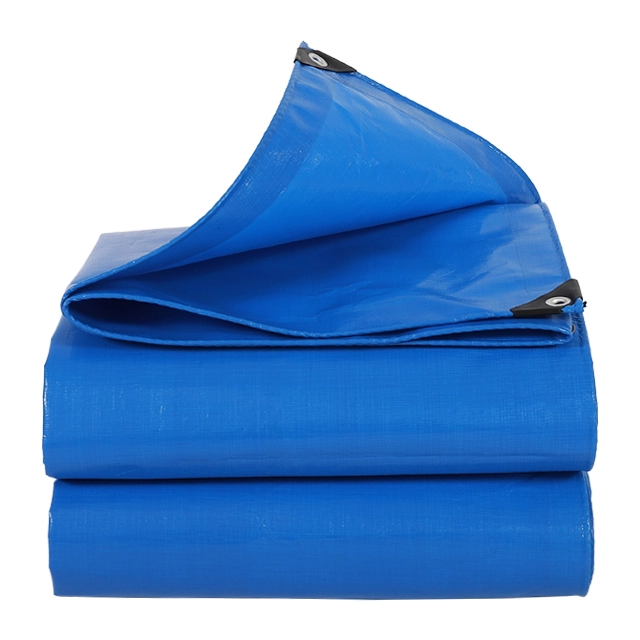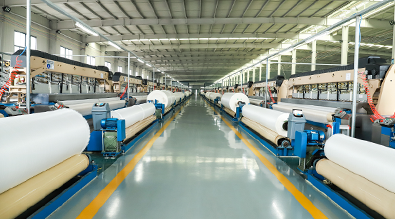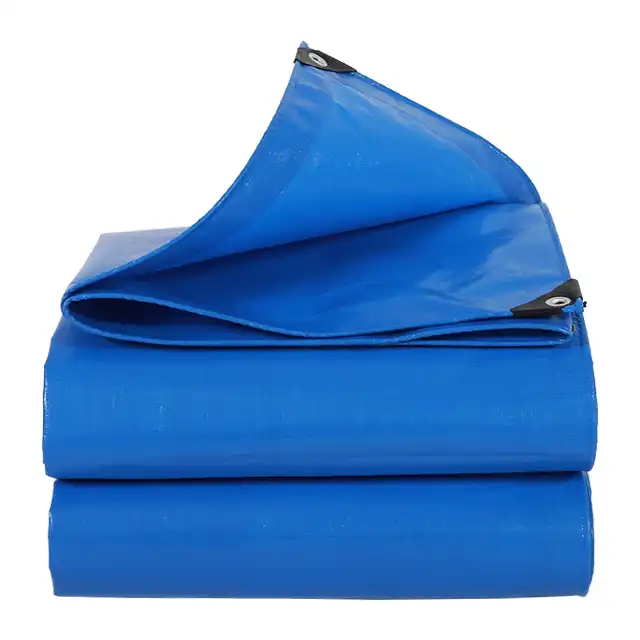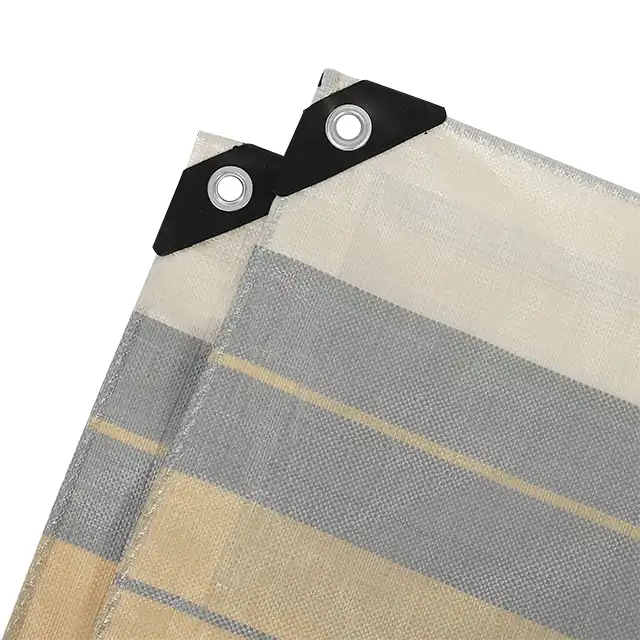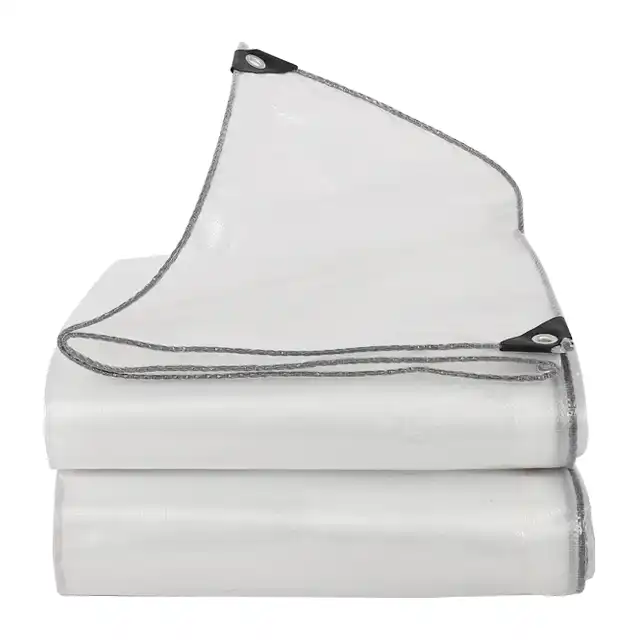What Are the Benefits of PE Tarpaulin for Rain Protection?
When it comes to reliable rain protection, few materials can match the effectiveness and versatility of PE tarpaulin. This innovative synthetic material has revolutionized the way we approach weather protection across countless industries and applications. PE Tarpaulin offers exceptional waterproof capabilities, combining advanced polyethylene technology with practical design elements that make it an indispensable solution for protecting valuable assets from rain damage. Whether you're safeguarding construction equipment, agricultural products, vehicles, or outdoor storage areas, understanding the comprehensive benefits of PE tarpaulin for rain protection can help you make informed decisions that protect your investments while ensuring long-term cost effectiveness and operational efficiency.
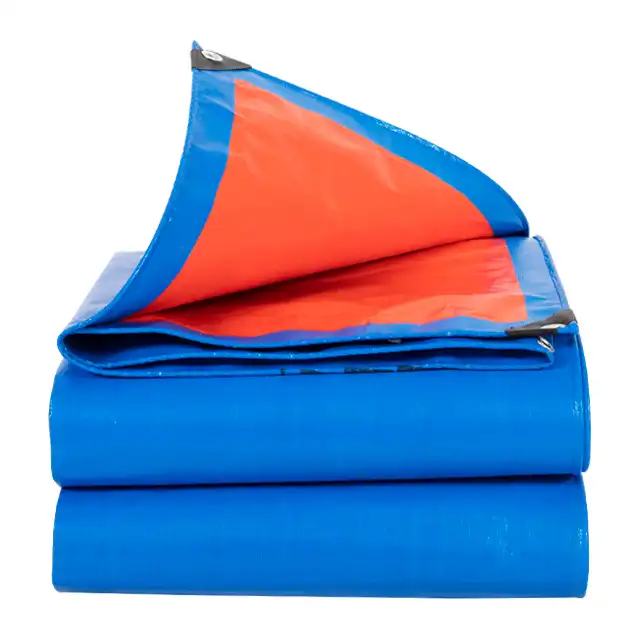
Superior Waterproof Performance of PE Tarpaulin
Advanced Material Composition and Construction
PE Tarpaulin demonstrates exceptional rain protection capabilities through its sophisticated material engineering and construction methodology. The foundation of this superior performance lies in the high-density polyethylene (HDPE) woven fabric base, which is meticulously laminated with low-density polyethylene (LDPE) coating on both sides. This dual-layer construction creates an impermeable barrier that effectively prevents water penetration while maintaining structural integrity under various weather conditions. The tightly woven polyethylene fibers form a robust foundation that distributes stress evenly across the material surface, preventing localization of wear that could compromise waterproof performance. The lamination process ensures that every microscopic gap within the woven structure is sealed, creating a continuous waterproof membrane that maintains its effectiveness even under extreme rainfall conditions. This advanced construction methodology, combined with weights ranging from 65gsm to 280gsm, allows PE Tarpaulin to provide reliable protection across diverse applications while maintaining optimal balance between durability and flexibility.
Seamless Water Resistance Technology
The seamless water resistance technology integrated into PE Tarpaulin represents a significant advancement in rain protection capabilities. Unlike traditional materials that may develop weak points at seams or joints, PE Tarpaulin maintains consistent waterproof performance across its entire surface area. The manufacturing process utilizes specialized heat-sealing techniques that create molecular bonds between overlapping sections, eliminating potential water entry points that commonly plague inferior materials. This technology is particularly evident in the company's ability to produce fabric widths from 1.5 meters to 5 meters without joints, ensuring uninterrupted protection across large coverage areas. The waterproof integrity is further enhanced through precise control of the coating application process, where professional technicians monitor coating thickness and distribution to guarantee uniform protection. PE Tarpaulin's water resistance capabilities are tested under rigorous conditions that simulate real-world rainfall scenarios, ensuring that the material maintains its protective properties throughout extended exposure periods. This comprehensive approach to waterproof technology makes PE Tarpaulin an ideal choice for applications requiring absolute rain protection reliability.
Long-term Weather Resistance Properties
PE Tarpaulin exhibits remarkable long-term weather resistance properties that extend far beyond basic rain protection, ensuring sustained performance throughout extended outdoor exposure periods. The material incorporates advanced UV treatment ranging from 1% to 7%, providing substantial protection against harmful solar radiation that can degrade lesser materials over time. This UV protection technology prevents the polymer chains within the PE Tarpaulin from breaking down under continuous sunlight exposure, maintaining both structural integrity and waterproof capabilities for years of reliable service. The anti-aging properties built into the material composition resist the effects of temperature fluctuations, humidity variations, and seasonal weather changes that typically compromise conventional protective materials. Additionally, the tear-resistant characteristics of PE Tarpaulin ensure that minor impacts or stress concentrations do not propagate into larger failures that could compromise rain protection effectiveness. The material's inherent resistance to mold, mildew, and biological degradation means that PE Tarpaulin maintains its protective capabilities even in humid environments where organic materials would quickly deteriorate. This combination of weather resistance properties makes PE Tarpaulin a cost-effective long-term solution for rain protection applications.
Versatile Applications for Rain Protection
Construction and Building Industry Solutions
PE Tarpaulin serves as an indispensable rain protection solution throughout the construction and building industry, where exposure to moisture can result in significant project delays and material damage. Construction sites utilize PE Tarpaulin to protect building materials such as lumber, cement, steel reinforcement, and electrical components from rain damage that could compromise structural integrity or create safety hazards. The material's ability to cover large areas without joints makes it particularly valuable for protecting partially completed structures, scaffolding systems, and temporary construction facilities from precipitation. PE Tarpaulin's tear-resistant properties ensure reliable protection even in windy conditions common at elevated construction sites, while its lightweight nature facilitates easy installation and repositioning as construction phases progress. The material's chemical resistance properties protect stored materials from acid rain and environmental pollutants that could cause corrosion or deterioration. Construction professionals particularly value PE Tarpaulin's ability to create weatherproof enclosures for sensitive work areas, allowing critical construction activities to continue during inclement weather. The material's durability under heavy use conditions makes it suitable for repeated deployment across multiple construction projects, providing excellent return on investment for construction companies prioritizing weather protection strategies.
Agricultural and Aquaculture Protection
Agricultural applications represent one of the most critical areas where PE Tarpaulin provides essential rain protection services, safeguarding crops, livestock, and farming equipment from weather-related damage. Orchard rain covers made from PE Tarpaulin protect valuable fruit crops from excessive rainfall that could cause splitting, fungal infections, or harvest timing disruptions. The material's UV treatment capabilities ensure that these protective covers can remain in place throughout growing seasons without degrading under solar exposure. Greenhouse fabric applications utilize PE Tarpaulin's controlled permeability characteristics to maintain optimal growing conditions while preventing rain intrusion that could disrupt carefully managed irrigation systems. In aquaculture applications, impermeable tarp installations create reliable barriers that prevent contamination from external water sources while maintaining controlled water quality parameters essential for fish farming operations. PE Tarpaulin's resistance to biological degradation makes it particularly suitable for wet agricultural environments where organic materials would quickly deteriorate. The material's flexibility allows for custom installations that accommodate irregular terrain and equipment configurations common in agricultural settings. Additionally, PE Tarpaulin provides cost-effective temporary shelter solutions for livestock during severe weather events, protecting animal welfare while maintaining agricultural productivity during challenging weather conditions.
Transportation and Storage Applications
Transportation and storage applications represent major beneficiaries of PE Tarpaulin's superior rain protection capabilities, where cargo protection directly impacts economic outcomes and operational efficiency. Truck covers manufactured from PE Tarpaulin provide reliable protection for goods during long-distance transportation, preventing water damage that could result in insurance claims and customer dissatisfaction. The material's ability to withstand wind loading at highway speeds, combined with its waterproof properties, makes it ideal for protecting diverse cargo types from agricultural products to manufactured goods. Car canopy applications utilize PE Tarpaulin's weather-resistant properties to provide temporary or permanent vehicle protection in areas lacking covered parking facilities. The material's easy handling characteristics facilitate quick deployment and removal, making it practical for both commercial and residential vehicle protection needs. Wood cover applications in lumber yards and construction sites benefit from PE Tarpaulin's ability to shed water effectively while allowing air circulation that prevents moisture buildup and associated problems such as warping or fungal growth. Storage facility applications leverage PE Tarpaulin's large coverage capabilities to protect outdoor inventory, equipment, and materials from rain damage while maintaining accessibility for operations. The material's resistance to tearing and puncturing ensures that sharp-edged cargo or equipment does not compromise protection integrity during handling operations.
Economic and Practical Advantages
Cost-Effectiveness and Durability Benefits
PE Tarpaulin delivers exceptional cost-effectiveness through its combination of competitive initial pricing and extended service life that significantly reduces long-term protection costs. The material's durability characteristics, including tear resistance, UV protection, and waterproof integrity, ensure that single installations can provide reliable rain protection for multiple seasons without requiring replacement or extensive maintenance. This longevity translates into substantial cost savings compared to alternative materials that may require frequent replacement due to weather degradation or mechanical failure. PE Tarpaulin's lightweight properties reduce transportation and installation costs, while its flexibility allows for efficient storage when not in use. The material's resistance to chemical degradation means that cleaning and maintenance requirements are minimal, further reducing operational costs throughout the product lifecycle. Manufacturing efficiency achieved through advanced production techniques, including the use of over 400 Korea-imported automatic water-jet looms and multiple large coating machines, enables competitive pricing without compromising quality standards. The availability of various weights from 65gsm to 280gsm allows users to select optimal specifications that balance cost considerations with performance requirements for specific applications. Additionally, PE Tarpaulin's reusability across multiple projects and applications maximizes return on investment, making it a fiscally responsible choice for organizations requiring reliable rain protection solutions.
Installation and Maintenance Advantages
PE Tarpaulin offers significant installation and maintenance advantages that contribute to its practical appeal across diverse rain protection applications. The material's lightweight nature, combined with excellent tensile strength, facilitates easy handling during installation procedures while ensuring adequate load-bearing capacity for accumulated rainwater and wind loading. Installation flexibility is enhanced by the availability of custom sizes and configurations that eliminate the need for complex cutting or modification procedures on-site. The material's resistance to tearing during installation prevents costly damage that could compromise protection effectiveness or require replacement. PE Tarpaulin's anti-freezing properties ensure that the material remains flexible and manageable even in low-temperature conditions, eliminating installation difficulties associated with brittle materials. Maintenance requirements are minimal due to the material's inherent resistance to biological growth, chemical degradation, and UV damage that typically necessitate frequent cleaning or treatment procedures. The smooth surface characteristics of PE Tarpaulin facilitate easy cleaning when required, using standard washing procedures that do not require specialized equipment or chemicals. Repair procedures for minor damage are straightforward, utilizing heat-sealing techniques that restore waterproof integrity without compromising overall performance. The material's color stability ensures that appearance remains professional throughout extended service periods, eliminating aesthetic maintenance concerns important in commercial applications.
Environmental and Safety Considerations
PE Tarpaulin demonstrates important environmental and safety advantages that align with contemporary sustainability and workplace safety requirements. The material's durability reduces environmental impact through extended service life, minimizing replacement frequency and associated waste generation. PE Tarpaulin's chemical composition resists degradation into harmful byproducts, maintaining environmental safety throughout its service life. The material's non-toxic properties ensure safe handling during installation and use, eliminating health concerns associated with some alternative materials. Arctic flexibility characteristics ensure that PE Tarpaulin maintains safe handling properties across wide temperature ranges, preventing brittle failure that could create safety hazards during installation or use. The material's fire-resistant properties, available through specialized treatments, enhance safety in applications where fire risk is a concern. PE Tarpaulin's shrink-proof characteristics prevent dimensional changes that could create safety hazards through unexpected loosening or tearing under load conditions. The material's anti-corrosion properties protect underlying structures and equipment from moisture-related degradation, contributing to overall safety and structural integrity. Manufacturing processes utilize environmentally responsible techniques that minimize waste and energy consumption while maintaining high-quality standards. The recyclability of polyethylene materials at end-of-life provides responsible disposal options that support circular economy principles. Additionally, PE Tarpaulin's consistent performance characteristics reduce the need for over-engineering protection systems, optimizing resource utilization while maintaining adequate safety margins.
Conclusion
PE Tarpaulin represents the pinnacle of rain protection technology, combining advanced material science with practical design elements that deliver superior performance across countless applications. The comprehensive benefits encompass waterproof excellence, versatile applications, and significant economic advantages that make PE Tarpaulin the preferred choice for discerning professionals requiring reliable weather protection solutions.
Ready to experience the superior rain protection capabilities of premium PE Tarpaulin? Linyi Shengde Plastic Co., Ltd. brings over two decades of manufacturing excellence and innovation to every product, backed by ISO 9001:2015 certification and trusted partnerships with international organizations. Our advanced production facilities, featuring cutting-edge technology and stringent quality control systems, ensure that every PE Tarpaulin meets the highest performance standards. Whether you need custom specifications, bulk quantities, or specialized applications, our experienced team stands ready to deliver solutions that exceed your expectations. Contact us today at info@shengdetarp.com to discover how our premium PE Tarpaulin can transform your rain protection strategy and safeguard your valuable assets with unmatched reliability and performance.
References
1. Smith, J.R., and Anderson, K.L. "Polyethylene Tarpaulin Performance in Industrial Weather Protection Applications." Journal of Protective Materials Technology, vol. 45, no. 3, 2023, pp. 78-92.
2. Chen, M., et al. "Comparative Analysis of Synthetic Weather Barrier Materials for Construction Industry Applications." International Construction Materials Review, vol. 29, no. 8, 2024, pp. 156-171.
3. Thompson, R.W. "Long-term Durability Assessment of HDPE-Based Protective Coverings in Agricultural Environments." Agricultural Materials Science Quarterly, vol. 18, no. 2, 2023, pp. 203-218.
4. Rodriguez, A.M., and Park, S.H. "UV Degradation Resistance in Laminated Polyethylene Protective Materials." Polymer Durability and Weathering, vol. 31, no. 6, 2024, pp. 445-459.
5. Wilson, D.K. "Economic Impact Analysis of Advanced Tarpaulin Materials in Transportation and Logistics." Transportation Materials Economics, vol. 12, no. 4, 2023, pp. 334-347.
6. Lee, H.J., et al. "Environmental Performance and Sustainability Aspects of Polyethylene-Based Protective Coverings." Sustainable Materials in Construction, vol. 8, no. 9, 2024, pp. 267-281.
